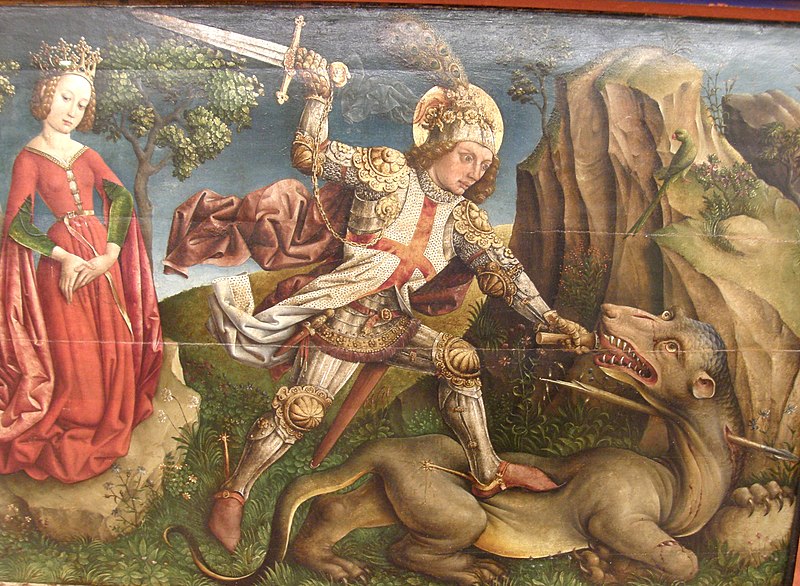“Costubers”
The Medieval and Renaissance Clothing Historians of YouTube
by Noelle Weaver
In a time when fast fashion means that everyone has access to clothing at any price range as often as they like, retailers provide new lines multiple times a season, and the average woman has over a hundred pieces of clothing in her wardrobe, it’s hard to imagine how life was before the invention of the sewing machine. Before mass production of goods and clothing, the average person’s material ownership was sparse, and most were limited to what they could make for themselves. The iconic curtain dress scene in Gone with the Wind is a comical depiction of the resources and time it took to have something new to wear to an event.
As it turns out, there’s an entire field of study devoted to the history of clothing. Preserving the remnants of what we have of historical garments, recordings of how clothing was made, popular styles in different decades, the description of garments in epics like The Iliad or The Odyssey, and other resources help museums and academics put together a picture of what people wore in different countries and periods.
This interest extends beyond the realm of academia and onto the platform of YouTube. Costume makers with an interest in history not only discuss clothing history and debunk popular misunderstandings (like the supposed injustice of the corset) and dubious interpretations, but they also go to extensive lengths to recreate historical garments. Not only do they use accurate and expensive materials like wool and linen, but they also do their best to assemble the garments with period-accurate techniques. This includes hand sewing and drafting their own patterns. The process takes hours and days, showing how much work a single shift, underwear never to be seen, could take. What was once a necessity for having clothing is now a painstaking passion project for these artists and creators.
Elin Abrahamsson
This video gives a great over view of what the average woman in the 1300s-1400s would’ve worn in northern Euopean and Scandinavian countries. The clothing she showcases are all based on garments found in the remains of a medieval Greenland settlement called Herjolfnes. Abrahamsson not only demonstrates how the different layers of clothing worked together, but also goes into the dying techniques and how the colors worn showed status. She also notes how the properties of different materials were used to their advantage along with sewing techniques. The wool of the stockings has a natural stretch in the fabric, and along with being cut on the bias, they can keep their shape without modern elastic and spandex. Imagine keeping socks up without the elastic! As it turns out, a simple strand of cloth tied around the top of the stocking right at the knee did the trick. Abrahamasson puts on two different outfits, the simpler kirtle of a peasant with cheaper dye colors, and the vibrant red that would have been worn by a noble woman, complete with a more complexly made lace-up kirtle.
In this period, a basic outfit was comprised of the under-dress called a shift and made from breathable linen, wool twill stockings tied up, a simple wool kirtle dress, and a second kirtle overtop for cold weather. Unmarried girls wore their hair up commonly in braids, and married women covered their hair with a cap and veil of simple fabric.
Morgan Donner
In yet another video on the clothing findings at Herjolfnes, Morgan Donner’s video (and video series if you want to see the long process from hand drafting a pattern to all the final touches) explores recreating a wool kirtle. This video is far more of a tutorial, with helpful sewing techniques and tips.
For fans of hair-styling and ancient history, her video on using iron-age hair tools is for you.
Abby Cox
With a funny crossover with Morgan Donner at the beginning and a nod to the trend amongst costumers to make authentic handsewn linen shifts, Abby Cox’s video is an entertaining demonstration on how long and painstaking it was for people to make their own clothing. Just watching her labor away at it in a condensed time lapse over ten minutes is enough to make the viewer sympathetic to the long process of making an incredibly simple garment. Not only was it a long and laborious task, but all that time was poured into an undergarment never to be seen in public.
Bernadette Banner

The last YouTuber based her video both of a French medieval painting depicting St. George slaying the dragon. Bernadette Banner uses both artistic license and the dresses at Herjolfnes to recreate the dress worn by the damsel in distress in the painting. She covers her process it in two parts. Bernadette Banner is a prolific “clothing historian” and costumer, a former Broadway costumer and current full time sewing-Youtuber with a passion for period-accurate techniques for garment creation.